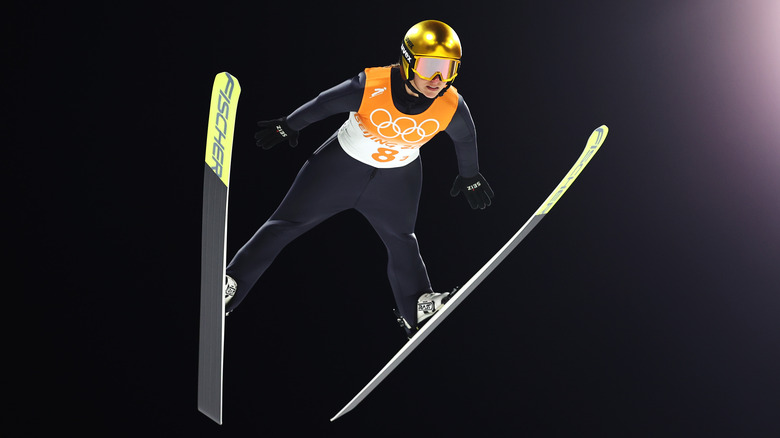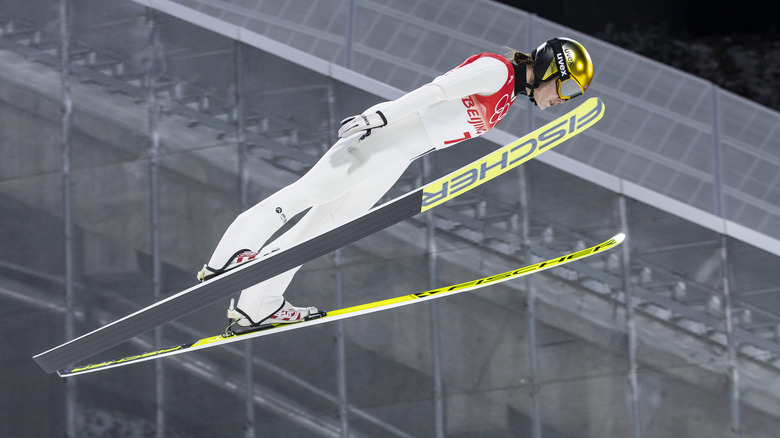The Controversy Over Women's Ski Jump Outfits At The Olympics Explained
Ski jumping requires a daunting mix of courage and athleticism. According to The Washington Post, skiers travel down a steep ramp at speeds of 60 miles per hour and fly 10 to 15 feet above ground. Jumpers are scored in part on their precision — how close they land to the K-point, a predetermined spot where jumpers are to make a safe landing. For events like the mixed-team event, this is a distance of 95 meters, almost as long as a football field.
Women's ski jumping first appeared at the 2014 Olympics, and the mixed team event is brand new for the 2022 Games (per CBS Sports). But amid the excitement of the new mixed-team competition, a surprising development occurred. Five women from Norway, Germany, Austria, and Japan were shocked to discover they were disqualified due to their outfits (per Independent). Certainly, with every new Olympics come new rules and regulations, but in this case, the athletes were baffled to hear the news. They had been wearing and competing in the same gear at the Beijing Games. So what changed overnight?
There are complex fitting rules for ski jumpsuits
According to NPR, the five women who were disqualified were Japan's Sara Takanashi, Austria's Daniela Iraschko-Stolz, Germany's Katharina Althaus, and Norway's Anna Odine Stroem and Silje Opseth. CBS Sports reported that their suits were deemed "too baggy." Officials were concerned that the loose fit to their suits would have helped the jumpers gain better airtime.
Due to the sport's aerodynamics, ski jumping has exacting rules about attire. NPR notes that ski jumpers must wear approved underwear, and suits have requirements on their seams and air permeability. Longer-haired jumpers are also restricted from tucking their hair into the suits.
According to The Guardian, Althaus wore her disqualified suit in an individual event at the Beijing Games. At the mixed team event, Stroem claimed officials had measured her suit differently than previous events. She also believed improper eating due to the imposed quarantine restrictions may have led to a change in fit. Takanashi was disqualified because her suit was too big around the thighs, although she also competed in it days before. Her coach claimed that "extreme dry weather may have affected her body's moisture content," per NPR.
Women's ski jumpsuits have come under criticism before. Previously, women's suits were required to have added hip panels. The International Ski Federation claimed the panels created a better fit. Some Olympic jumpers, like Sarah Hendrickson, felt the choice showed a woman's curves and didn't serve a functional purpose. The hip panel rule was removed in 2020 (per NPR).

